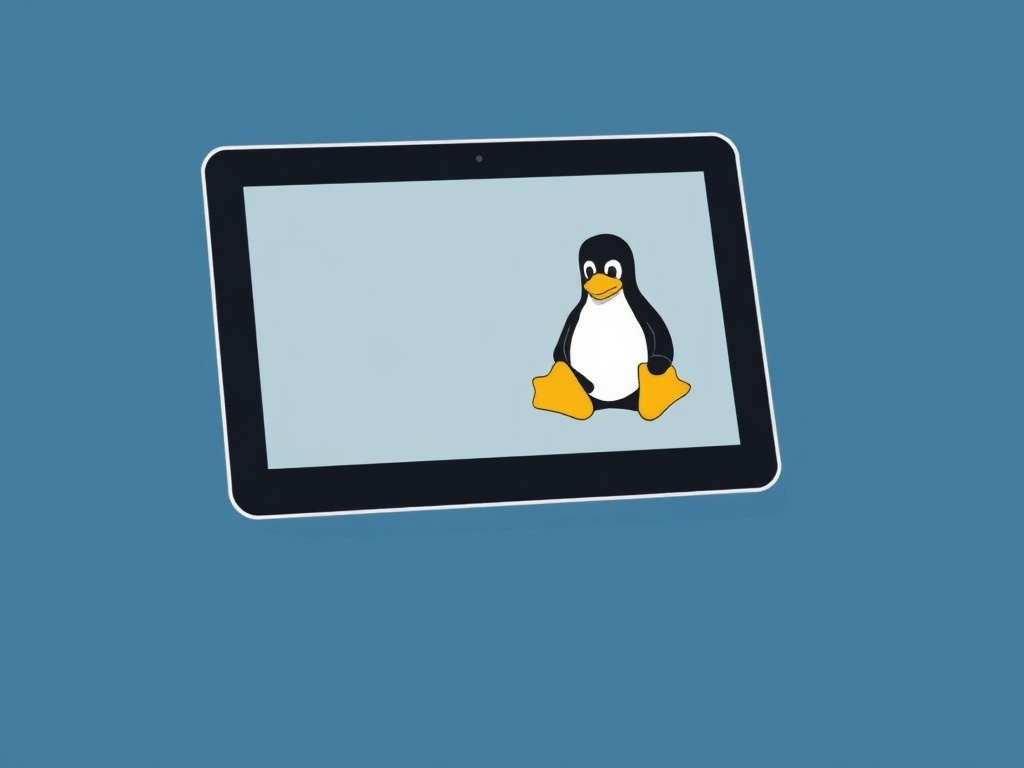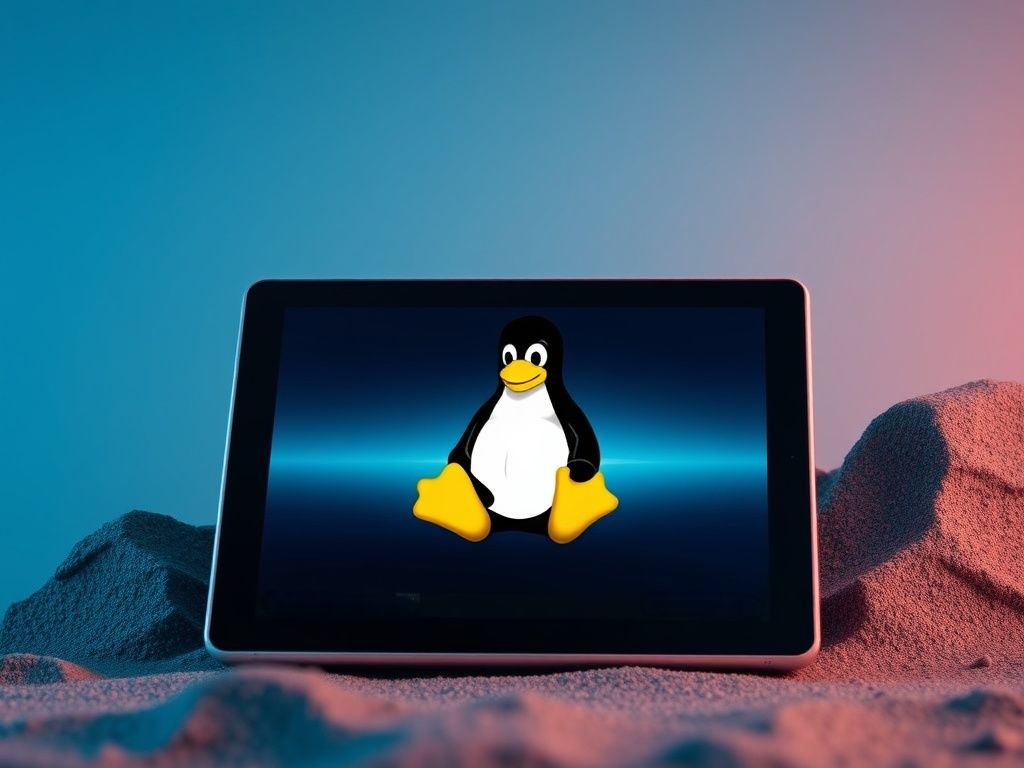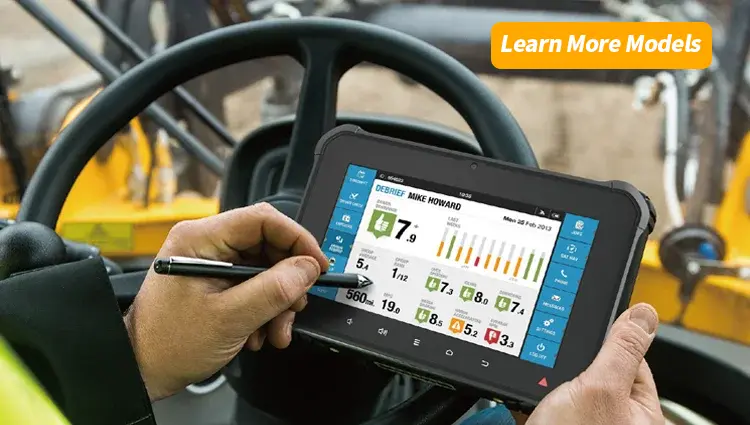Best Linux Tablets & OS Choices for Power Users | Your Ultimate Guide
- Why Choose a Linux Tablet? The Freedom You Deserve
- What Makes the Best Linux OS for Tablet?
- Unveiling the Best Linux Distributions for Tablets
- Finding the Best Tablet for Linux: Hardware Matters
- Beyond the Basics: Specific Use Cases & Related Queries
- Setting Up Your Best Linux Tablet OS: Tips for Success
- The Future of Linux Tablets: A Bright Horizon
Remember that feeling when you first held a tablet, imagining all the possibilities? The sleek design, the portability, the promise of productivity and entertainment at your fingertips. But then, for many, that initial spark sometimes dims. Maybe you hit a wall with app limitations, felt a lack of true control, or just craved something more open and customizable.

If that sounds familiar, you’re not alone. And that’s exactly why the world of Linux tablets is booming! Imagine a device that combines the convenience of a tablet with the unparalleled flexibility, security, and power of Linux. No more walled gardens, just pure, unadulterated computing freedom.
This guide is your deep dive into everything you need to know about Linux tablets. Whether you’re a seasoned Linux user curious about mobile frontiers or an Android/iPad user ready to break free, we’ll help you navigate the exciting landscape of best Linux tablets, best Linux OS for tablet, and how to get the most out of them.
Why Choose a Linux Tablet? The Freedom You Deserve
Let’s be honest, consumer tablets today are largely dominated by Android and iPadOS. While they’re fantastic for many, they come with certain limitations:
- Closed Ecosystems: You’re often tied to specific app stores and services, limiting your software choices.
- Privacy Concerns: The amount of data collected by commercial OSes can be unsettling for some.
- Lack of Control: Deep customization and system-level access are often restricted.
- Planned Obsolescence: Software updates eventually cease, forcing hardware upgrades.
Linux for tablets offers a compelling alternative. It’s about:
- Unrivaled Customization: Tweak every aspect of your system, from the desktop environment to system scripts.
- Open Source Freedom: Benefit from a vibrant community, transparency, and no vendor lock-in.
- Enhanced Security & Privacy: Linux is known for its robust security features and community-driven focus on privacy.
- Longevity: Even older hardware can often run modern Linux distributions efficiently.
- True Productivity: With access to a vast array of desktop-grade software, a Linux tablet computer can truly replace a laptop for many tasks.
What Makes the Best Linux OS for Tablet?
Choosing the best Linux OS for tablet isn’t a one-size-fits-all answer. It largely depends on your specific needs, the tablet’s hardware, and your comfort level with Linux. Here’s what we look for:
- Touch Optimization: The OS should be designed with touch input in mind, offering intuitive gestures and large, easy-to-tap targets.
- Hardware Compatibility: Does it support your tablet’s specific components like Wi-Fi, Bluetooth, camera, and sensors?
- Battery Life Management: A good tablet OS needs to be power-efficient.
- Software Availability: Access to a decent range of applications for productivity, Browse, and media.
- Community Support: A strong community means more resources, tutorials, and help when you need it.
Unveiling the Best Linux Distributions for Tablets
When people ask “which Linux distribution is best on an Android tablet” or “what are the best Linux systems for tablets,” they’re looking for practical solutions. Here are some of the front-runners and what makes them shine:
1. Ubuntu Touch (UBports)
Why it’s a contender for the best Linux OS for tablet: Ubuntu Touch is specifically designed for mobile devices, offering a unique, gesture-driven user interface. It focuses on convergence, aiming to provide a consistent experience across phones and tablets.
- Pros: Excellent touch experience, convergence features (connecting to a monitor for a desktop experience), decent app ecosystem (via Libertine containers for desktop apps and Scopes for web apps).
- Cons: Limited hardware support compared to more general-purpose distros, app ecosystem is still growing.
- Ideal for: Users who want a pure mobile Linux experience with a focus on convergence and a distinct UI.
2. PostmarketOS
Why it’s a strong option for Linux for tablets: PostmarketOS aims to bring a rolling release Linux distribution to mobile devices, focusing on long-term support for a wide range of hardware, even older Android devices. It supports various desktop environments like Plasma Mobile, Phosh, and XFCE.
- Pros: Excellent for breathing new life into older hardware, strong focus on upstream Linux components, various UI options.
- Cons: Can be more technically challenging to install, still under heavy development, not all features might work on every device.
- Ideal for: Enthusiasts who love to tinker, those with older Android tablets looking for a new lease on life, and users who want the latest Linux features on mobile.
3. Manjaro ARM (with Plasma Mobile/Phosh)
Why it’s among the best Linux for tablet pc options: Manjaro ARM offers a user-friendly Arch Linux experience optimized for ARM-based devices, which most tablets are. With Plasma Mobile or Phosh as the desktop environment, it provides a genuinely touch-friendly interface.
- Pros: Access to the vast Arch Linux repositories, rolling release model (always up-to-date), relatively easy to install on supported devices, good performance.
- Cons: Still some rough edges in terms of touch optimization compared to dedicated mobile OSes.
- Ideal for: Users who want a powerful, up-to-date Linux experience on their tablet with access to a wide range of software, comfortable with a slightly more desktop-like feel.
4. Fedora (with Phosh/GNOME)
Why it’s a solid choice for best tablet linux: Fedora is a cutting-edge distribution, and its ARM variants, especially with desktop environments like Phosh or GNOME (which has excellent touch support), can provide a robust Linux tablet computer experience.
- Pros: Very current software, strong security focus, great for developers.
- Cons: Might be more resource-intensive, touch experience with full GNOME can sometimes be less optimized than dedicated mobile shells.
- Ideal for: Developers, power users, and those who prioritize the latest software and a secure environment.
5. Debian (with various DEs)
Why it’s a versatile choice for Linux for tablet computers: Debian is known for its stability and wide hardware support. While it doesn’t have a dedicated mobile shell, you can install lightweight desktop environments like XFCE, LXDE, or even GNOME, and customize them for touch.
- Pros: Extremely stable, massive software repositories, excellent community support.
- Cons: Installation can be more involved, requires more manual configuration for a good touch experience.
- Ideal for: Experienced Linux users who want ultimate control and stability, willing to configure their system for optimal tablet use.

Finding the Best Tablet for Linux: Hardware Matters
While software is crucial, the hardware you choose significantly impacts your Linux tablet experience. So, what is the best tablet for Linux? Here’s what to consider:
- ARM vs. x86: Most tablets are ARM-based, making them compatible with distributions like Manjaro ARM, Ubuntu Touch, and PostmarketOS. Some tablets, particularly convertibles or older Windows tablets, might have x86 processors, opening up more traditional desktop Linux distros. For the absolute best compatibility, generally ARM is preferred for dedicated mobile Linux OSes, while x86 offers broader traditional Linux support.
- Open Hardware: Devices with more open hardware (where drivers are readily available or open-source) will offer a smoother experience.
- Screen Size & Resolution: Choose a size that suits your usage. Higher resolutions are great, but ensure the OS scales well.
- RAM & Storage: Aim for at least 4GB of RAM (8GB+ is better) and 64GB of storage for a comfortable experience.
- Battery Life: Linux distributions vary in power efficiency, but good baseline battery life from the hardware is essential.
- Peripherals: Check for working Wi-Fi, Bluetooth, cameras, and USB ports (especially USB-C with display out for convergence).
Top Contenders for the Best Linux Tablets (Hardware-Wise):
It’s important to note that very few tablets are sold with Linux pre-installed. The “best” are often those with good community support for Linux porting or those that lend themselves well to it.
- PineTab / PineTab 2: These are purpose-built Linux tablets, designed from the ground up to run Linux. They offer the most hassle-free experience if you want a dedicated Linux device.
- Pros: Designed for Linux, excellent community support, affordable.
- Cons: Hardware specifications might not be cutting-edge compared to mainstream tablets.
- Ideal for: Anyone who wants a ready-to-go Linux tablet computer without the fuss of porting.
- Older Android Tablets (e.g., Nexus series, some Samsung Galaxy Tabs): These are often targets for projects like PostmarketOS due to their popularity and documentation.
- Pros: Cheap to acquire, good community documentation for porting.
- Cons: Success varies wildly by model, often requires significant technical effort.
- Ideal for: Enthusiasts on a budget willing to put in the work.
- Microsoft Surface Devices (older models): While not ideal, some older Surface Pro models (x86) can run desktop Linux distributions reasonably well, offering a laptop-tablet hybrid experience.
- Pros: Good hardware quality, can run full desktop Linux.
- Cons: Driver issues can be prevalent (Wi-Fi, touch, pen), often requires kernel patching.
- Ideal for: Users who need a powerful hybrid and are prepared for potential troubleshooting.
- Certain Lenovo/HP 2-in-1 Laptops: While technically laptops, many function very well as large tablets in tent or tablet mode, and their x86 architecture makes Linux installation straightforward.
- Pros: Full desktop Linux experience, powerful hardware, generally good Linux compatibility.
- Cons: Heavier and less portable than dedicated tablets.
- Ideal for: Those who want a true laptop replacement with tablet capabilities.

Beyond the Basics: Specific Use Cases & Related Queries
What is the best Wacom tablet for Linux?
When it comes to graphics tablets (often confused with drawing tablets that run an OS), Wacom is a leader. For Linux users, Wacom tablets generally have excellent support thanks to the libwacom project. Most Intuos and Cintiq lines work well out-of-the-box or with minimal configuration on popular distributions like Ubuntu, Fedora, and Manjaro. The best Wacom tablet for Linux is often the one that fits your budget and artistic needs, as driver support is broadly consistent across their product lines. Just ensure your chosen Linux distribution has the necessary Wacom drivers and utilities (often pre-installed or easily available).
Transforming Your Android Tablet: Which Linux distribution is best on an Android tablet?
This is a common question, and as discussed, PostmarketOS and Manjaro ARM are often the front-runners for installing a dedicated Linux OS onto an Android tablet. However, if you want to run Linux on top of Android without replacing it, solutions like Termux (a terminal emulator for Android) combined with tools like proot-distro allow you to install and run full Linux distributions (like Debian, Ubuntu, Fedora) within your Android environment. This offers a less intrusive way to get Linux for tablets without wiping your Android system.
Linux Tablet Computer vs. Laptop: Where Do They Stand?
A Linux tablet computer blurs the line between a traditional tablet and a laptop. With the right distribution and accessories (keyboard cover, stylus), they can handle many tasks typically reserved for laptops, from document editing and coding to media consumption and light gaming. The key differentiator is portability and the primary input method. If touch and portability are paramount, a dedicated Linux tablet shines. If heavy computational tasks and constant keyboard use are your priority, a laptop (or a 2-in-1 convertible running Linux) might be more suitable.
Setting Up Your Best Linux Tablet OS: Tips for Success
So you’ve chosen your hardware and your preferred Linux OS for tablet. Now what? Here are some general tips:
- Do Your Research: Before flashing anything, thoroughly research your specific tablet model and the chosen Linux distribution’s compatibility. Check forums and wikis!
- Backup Everything: This cannot be stressed enough. Flashing a new OS will wipe your device.
- Follow Instructions Carefully: Each distribution and tablet model will have specific installation instructions. Don’t skip steps.
- Consider a Keyboard and Stylus: Even with touch-optimized UIs, a physical keyboard and stylus can dramatically enhance productivity on a Linux tablet.
- Explore Apps: Dive into the software repositories. You’ll find powerful open-source alternatives for almost any task. Look for apps optimized for touch or responsive web apps.
- Join the Community: Linux communities are incredibly helpful. If you run into issues, chances are someone else has too, and a solution exists.

The Future of Linux Tablets: A Bright Horizon
The journey of Linux tablets is still evolving, but the progress is undeniable. With projects like Plasma Mobile, Phosh, and Ubuntu Touch maturing, and more hardware manufacturers considering Linux, we’re seeing a shift towards more viable and user-friendly Linux tablet computer options.
The drive for open-source, privacy-respecting, and highly customizable mobile computing is stronger than ever. Whether you’re a student, a developer, a creative, or just someone who craves more control over their devices, exploring the world of Linux tablets could be the perfect next step.
So, are you ready to embrace the freedom and power that a Linux tablet can offer? The possibilities are truly endless.








